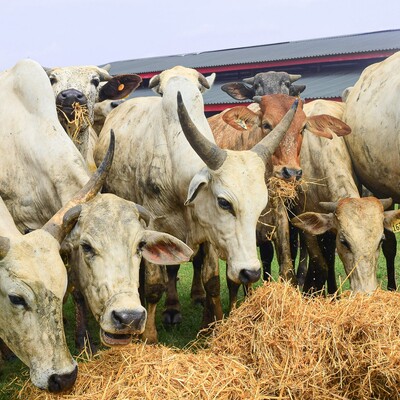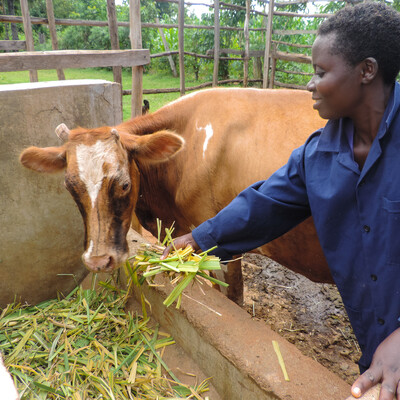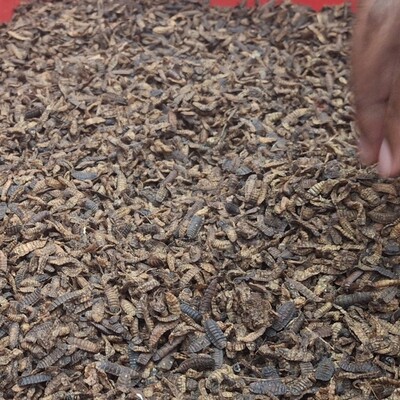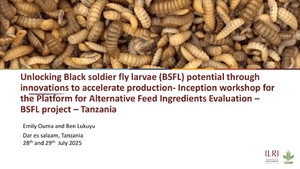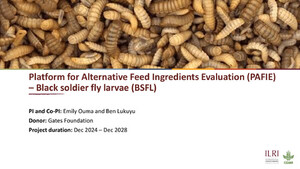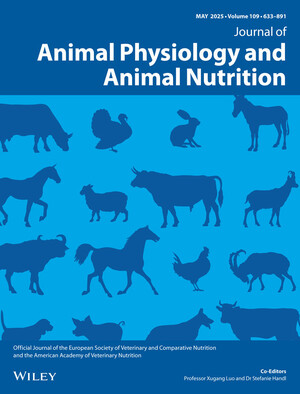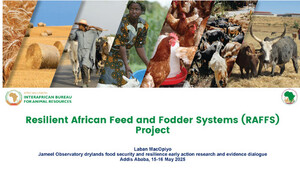
Improvement of Fodder Markets and Identification of Crop Varieties with Improved Fodder Characteristics in Selected Disadvantaged Areas of India
This project works towards achieving a better understanding of the structure and functioning of fodder markets in selected disadvantaged regions of India and how these markets can contribute to improving the livelihoods of poor livestock keepers. The project also explores how improvements to the nutritional value of crop residues could contribute to improving livestock productivity and hence rural livelihoods.
South Asia has recently experienced rapid growth in consumer demand for dairy products. In India, demand for milk is projected to double between 2000 and 2025. This growth in demand can potentially provide a significant source of income to poor livestock producers. However, one of the key constraints to the development of the dairy sector in resource-poor areas of India is inadequate supply of fodder, resulting in low levels of productivity and lack of a marketable surplus of milk.
Livestock rely heavily on crop residues as the main source of fodder in much of India. In Bihar State, for example, more than half of the land area is planted to rice, and the main types of animal feeds used include rice straw, wheat straw and some pulse residues. However, insufficient fodder and poor nutritive quality of animal feed are widespread problems in the region. These problems are more acute in the eastern parts where agricultural resources, particularly arable land and water, are scarcer. While fodder scarcity affects most farmers, those who are landless or who have access to only small areas of land are hardest hit.
Fodder markets are particularly important for the poorest and landless segments of communities that have very limited ability to produce their own fodder, and need access to quality fodder at reasonable prices to be able to produce milk economically and at competitive cost. Fodder trading is also an important livelihood activity for the poor who engage in it directly or who are employed in the fodder value chain.
Objectives
The overall objective of the project is to improve the livelihoods of resource-poor livestock producers by alleviating fodder scarcity. The specific objectives are to:
- Develop a systematic understanding of fodder markets and their interaction with the nutritive value of fodder.
- Quantify the variation in nutritive value of different varieties/cultivars of fodder crops in relation to market availability and perceptions.
To achieve these objectives, the project is undertaking the following five main activities:
1.Geographical targeting: This activity aims at identifying areas where fodder scarcity is important and fodder markets can be used to mitigate the problem. Contrasting zones have been selected from Bihar based on the existence of fodder markets and level of fodder scarcity.
2.Rapid appraisal of study sites: A rapid appraisal of the study sites will be carried out to develop a better understanding of the various production systems, fodder demand-balance systems, the relative importance and impact of fodder scarcity, the existence of fodder markets and their functioning, as well as the roles of the various actors along the fodder market chain.
3.Detailed survey of fodder markets and actors: An in-depth survey will be conducted on different aspects of fodder markets in order to better understand the relationships between the various market actors and identify their constraints and opportunities. Particular attention will be paid to the relationship between price and nutritive quality of fodder.
4.Quantification of nutritive value of crop residues: The nutritive value of crop residues from the major varieties will be assessed based on samples drawn from crop improvement programs. Relationships between grain yield, straw yield and straw quality will be analyzed for possible trade-off effects.
5.Dissemination and outreach: A final workshop involving representatives of stakeholders and partners will be held to share the overall findings of the project and their implications for future action. Regular engagement with the stakeholders and partners will be undertaken to solicit their feedback during the course of the study.
For more information about the project, please contact
Iain Wright
Project coordinator
Email: i.wright@cgiar.org





